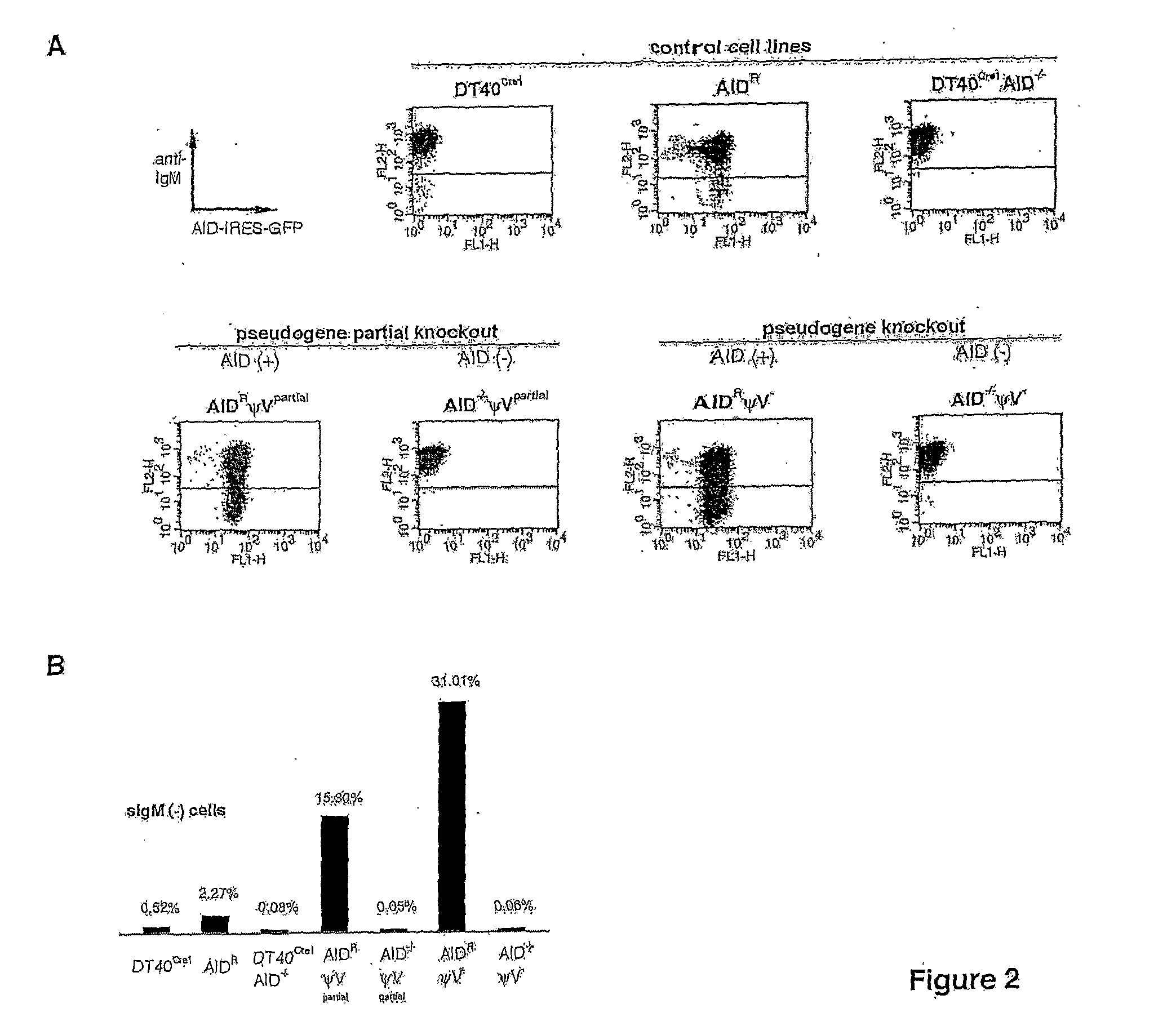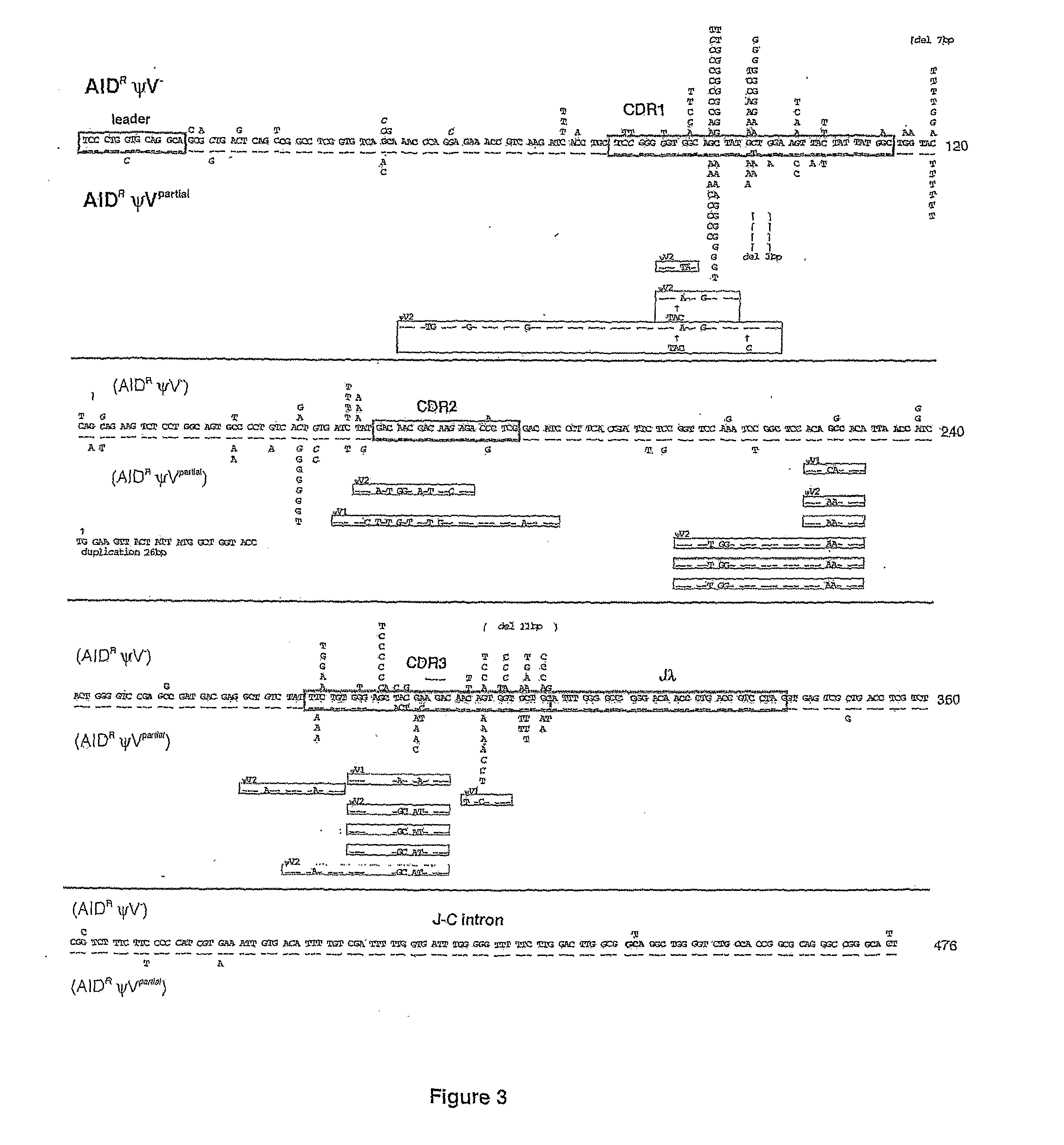Methods for genetic diversification in gene conversion active cells
a technology of gene conversion active cells and genetic diversification, which is applied in the field of genetic diversification in gene conversion active cells, can solve the problems of difficult to direct mutations to the target nucleic acid where they are desired, difficult to achieve the effect of reducing the number of mutated genes, and reducing the efficiency of mutated molecules with improved activity by repeated cycles of mutations
- Summary
- Abstract
- Description
- Claims
- Application Information
AI Technical Summary
Benefits of technology
Problems solved by technology
Method used
Image
Examples
examples
1. AID Initiates Immunoglobulin Gene Conversion and Hypermutation by a Common Intermediate
[0065] Herein it is reported that ablation of ψV donors activates AID-dependent Ig hypermutation in chicken B cell line DT40. This shows that Ig gene conversion and hypermutation are competing pathways derived from the same AID-initiated intermediate. Furthermore ψV knock-out DT40 is proposed as an ideal model system to approach the molecular mechanism of Ig hypermutation and as a new tool for in situ mutagenesis.
Methods
[0066] Cell lines. DT40Cre1 which displays increased Ig gene conversion due to a v-myb transgene and contains a tamoxifen inducible Cre recombinase has been described previously (Arakawa et al., 2001). DT40Cre1 AID− / − was generated by the targeted disruption of both AID alleles of DT40Cre1, (Arakawa et al., 2002). AIDR was derived from DT40Cre1 AID− / − after stable integration of a floxed AID-IRES-GFP bicistronic cassette, in which both AID and GFP are expressed from the sam...
PUM
| Property | Measurement | Unit |
|---|---|---|
| Fraction | aaaaa | aaaaa |
| Fraction | aaaaa | aaaaa |
| Fraction | aaaaa | aaaaa |
Abstract
Description
Claims
Application Information
 Login to View More
Login to View More - R&D
- Intellectual Property
- Life Sciences
- Materials
- Tech Scout
- Unparalleled Data Quality
- Higher Quality Content
- 60% Fewer Hallucinations
Browse by: Latest US Patents, China's latest patents, Technical Efficacy Thesaurus, Application Domain, Technology Topic, Popular Technical Reports.
© 2025 PatSnap. All rights reserved.Legal|Privacy policy|Modern Slavery Act Transparency Statement|Sitemap|About US| Contact US: help@patsnap.com



